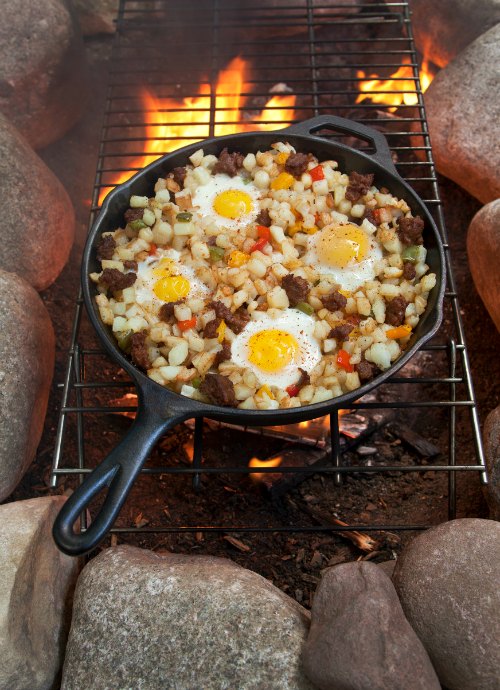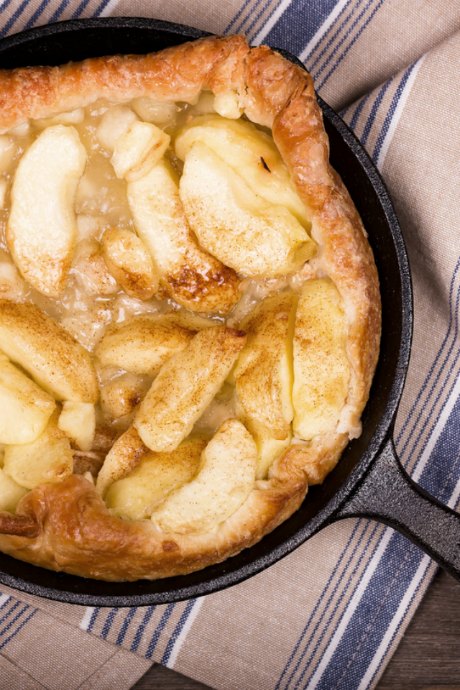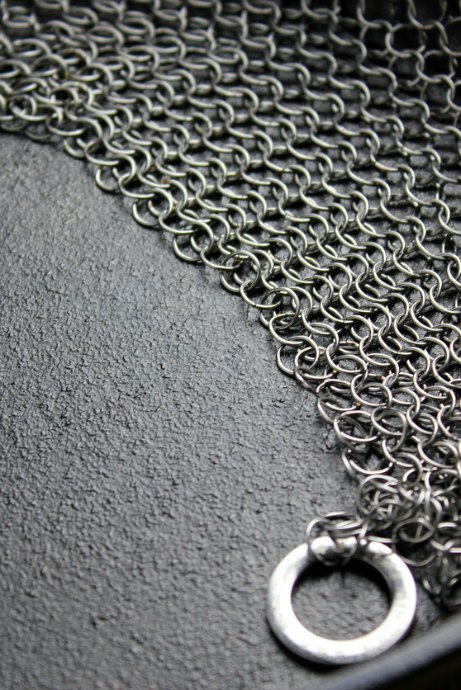Types of Cookware: Cast Iron
Posted by Julie on Apr 30th 2018
When faced with virtual shelves of cookware made from various materials, it helps to know a bit about your options. From vintage black skillets to colorfully enameled Dutch ovens, cast iron cookware has been in vogue for decades. You can find it in antique shops, department stores, and exclusive retailers.
Last week, we covered stainless steel cookware. This week, we'll explain why cast iron is much more than just a pretty face. Even when it's ancient and rusty, you can bring cast iron cookware back to life and put it to work again. Keep reading to learn more about this kitchen workhorse that deserves a spot on your stovetop.
The Basics of Cast Iron Cookware
Like steel, cast iron is an alloy of iron and carbon. However, cast iron has a higher percentage of carbon than stainless steel, and it doesn't contain chromium or nickel. Therefore, cast iron is prone to rust if it's left to soak or even if it isn't dried thoroughly after washing. Cast iron can be uncoated or raw, or it can be enameled, like the cookware offered by Le Creuset and Staub. Raw cast iron needs to be seasoned (more on this in a bit), while enameled cast iron does not.
Pros and Cons of Cast Iron Cookware
Cast iron is exceptionally strong and durable, just like stainless steel cookware. In fact, cast iron can last for generations. You may find cast iron cookware in your grandparents' home that performs just as well as, if not better than, brand new cast iron cookware.

Cast iron cookware heats up evenly and retains heat well. It can handle high heat, whether on the stovetop, in the oven, on the grill, or even over a campfire. A raw cast iron pan may not have an insulated handle though, so use an oven mitt to prevent inadvertently burning your hand.
While enameled cast iron can be expensive, raw cast iron is quite affordable. However, you will need to spend time seasoning your pan before using it, and occasional re-seasoning is necessary over the years. On the other hand, enameled cast iron is often dishwasher safe and does not require seasoning.
Likewise, enameled cast iron can be used to cook any sort of ingredients, while raw cast iron can react with acidic ingredients like tomatoes, citrus, or wine. Acidic ingredients can strip away seasoning and impart a metallic taste to food. Be sure your pan is thoroughly seasoned, and be prepared to re-season it more frequently if you opt to simmer tomato sauce in your cast iron pan.

The seasoning on your pan can absorb flavors. If you want to use your cast iron pan for cooking sweets, such as the cast iron skillet desserts we've highlighted, scrub it thoroughly (and re-season it afterward). You can also keep separate skillets for sweet and savory recipes.
Finally, whether you choose raw or enameled cast iron, this cookware is heavy. Use the helper handle when moving or pouring from your cookware, and don't forget the oven mitts.
Tips for Using Cast Iron Cookware
Our staff cookware expert offered her method for seasoning cast iron. Check out her tips below:
Get some lard, put your pan on the burner, and turn the burner on high. When your pan is screaming hot, coat the entire surface of the pan with lard, using an old towel to rub it in. When the lard starts to smoke, apply the next coat. After three to five coats, your pan should have a beautiful, shiny, nonstick surface. Let it cool, store it, and re-season it as needed.
You can also season cast iron in the oven. Turn your oven to 450F, rub your pan with oil, and then place it upside down in the oven (on top of a baking sheet or another pan) for half an hour. You can repeat this process as needed, especially when seasoning a brand new pan for the first time, or restoring an older piece of cast iron cookware.

Raw cast iron should never go in the dishwasher. In fact, most cooks caution against cleaning cast iron with soap, no matter how well-seasoned it may be. Cast iron that's been properly seasoned will be naturally nonstick, so most food should rinse away easily. Use water and salt to clean stubborn spots, or chain mail (like in the photo above), but be sure to dry your pan fully before putting it away. Even a well-seasoned pan has pores where moisture can seep in and start to oxidize the iron.
Cast Iron Cookware Recommendations
We carry both Le Creuset and Staub enameled cast iron. There are good reasons why so many cooks swear by these two brands and amass large collections of enameled cast iron cookware. If you don't yet own any cast iron, we recommend starting with a skillet or a Dutch oven (or both, such as in the Le Creuset 5-Piece Signature Set). If you're feeling nostalgic and don't mind using a bit of elbow grease, check out thrift and antique stores for vintage cast iron pieces to restore yourself.
Check back next week for the third post in this series, where we'll cover nonstick cookware.

